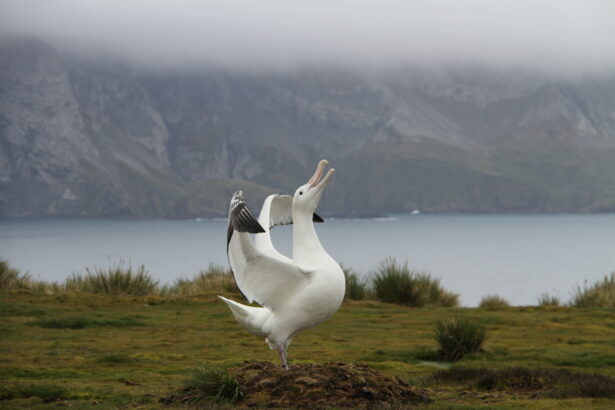
From lush, misty cloud forests to snow-dusted mountains, the UK Overseas Territories are spread across all seven major oceans and seas. As members of one British family, the UK government shares responsibility for supporting the conservation of their vast diversity of species, habitats and ecosystems. Such stewardship matters because the Territories safeguard globally significant biodiversity that underpins climate resilience, food security and the health of our planet.
Today marks an important milestone in the UK’s relationship with its Overseas Territories, as we launch the new UK Overseas Territories Biodiversity Strategy.
Globally significant, locally unique
The Territories’ natural value lies in their extraordinary geographic diversity and uniqueness. They encompass every major ecosystem type – from rainforests to polar tundra, cactus shrublands to mangrove forests. Their landscapes range from active volcanoes to tranquil salt lagoons. Many are remote islands, where species have evolved in isolation following distinct evolutionary paths.
The Royal Society for the Protection of Birds (RSPB) has estimated that over 90% of endemic UK species (‘endemic’ meaning species found nowhere else) live in the Territories, with St Helena alone providing home to a third of the UK’s endemic species – despite only being a third of the size of the Isle of Wight.
The Territories’ influence extends beyond their shorelines, as many millions of migratory seabirds, marine mammals and sea turtles are drawn to hundreds of key refuge sites across their islands. For example, the Territories are home to a quarter of the world’s penguins and a third of the world’s albatross.

Their remarkable biodiversity is also essential to the wellbeing of the 270,000 people who call the Territories home. Nature plays a critical role in maintaining the quality of their soil, water and air. Many of their local economies are heavily dependent on nature-based income sources such as fishing and tourism, and when kept in good health, their natural landscapes can play a vital role in local climate resilience.
However, what makes the Territories’ nature special also makes it vulnerable.
Nature under threat
The Joint Nature Conservation Committee (JNCC) estimates that nearly half of the Overseas Territories’ endemic species are threatened with extinction. Endemic species are often specialised and live over small ranges, so any habitat loss or degradation has a big impact. The arrival of invasive aliens can wipe out native species that haven’t evolved to cope with them.
As small, geographically remote and/or low-lying islands, the Territories are also on the front-line of climate change. They face mounting pressures from higher temperatures, rising sea levels and extreme climatic events such as tropical cyclones, storm surges and prolonged droughts, and catastrophic consequences such as coral bleaching and melting glaciers.
Maintaining healthy ecosystems is essential for resource security and climate resilience, both for people and for nature.
A united strategy to support Overseas Territory biodiversity
In the face of these challenges, the newly published UK Overseas Territories Biodiversity Strategy aims for a better future.
For the first time, it presents a single joint ambition of the UK Government and governments and administrations of the Overseas Territories to conserve, protect, and restore biodiversity and champion the benefits of nature.
The strategy has been co-created with the Territories following an extensive JNCC-supported consultation to span the key issues, challenges and opportunities for biodiversity in these special places.
The first half of the strategy aims to guide action under six common goals, from developing skills and talent, to enhancing environmental resilience. The second half includes a bespoke chapter for each Territory to capture their national priorities for nature. From the pink sandy beaches of Bermuda to the icy waters of British Antarctic Territory, the strategy makes clear that no two Territories share the same needs.
Importantly, this strategy is intended as a living document, relevant and responsive as goals progress and priorities shift. Intended for use by all organisations and individuals living and working in and with an interest in the Territories, the strategy will steer funding into meeting the conservation priorities of each Territory, protecting resource for what matters most locally.
Its publication today marks a new era of collaboration and communication between the UK and Territory governments, united for nature.
To find out more, read the strategy.

Leave a comment